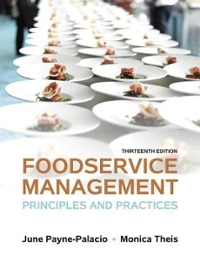Question
Reactive Procurement versus Proactive Procurement Generally, procurement is referred to as acquiring goods or services at the right price, on time, at the right quantity,
Reactive Procurement versus Proactive Procurement Generally, procurement is referred to as acquiring goods or services at the right price, on time, at the right quantity, with the right quality and from the right source. Nowadays, this common sense about procurement becomes simplistic and superficial. Eventually, all purchasers should question the illusion of what exactly the right price or the right source is. The business world is changing with the speed of light and things fluctuate second by second, hence setting stable and rigid standards for procurement is no longer potent for many enterprises, if not all of them. In the mid-1970s, procurement was seen as an administrative function rather than a strategic function. Procurement played a passive role in the organisational structure and was operated in an isolated environment rather than an integrated supply chain (Cousins et al. 2007.). The new term Supply Chain Management, developed in the 1980s, has changed the way procurement interacts with suppliers and other departments in organisations. One of the new terms in procurement process nowadays is Proactive Buying (Davies et al. 2004). Apparently, it is a revolutionary term to avoid the drawbacks of reactive approach in procurement and widely in Supply Chain Management. The procurement department may not usually be aware of the bull whip- effect and it leads to huge unnecessary orders. This is when the inventory level suddenly reaches the peak and the company wastes its current cash flow for liabilities. From this point of view, integrated database is also a Page 2 of 2 tool for internal communication within the chain to avoid information flow failures and it allows the procurement department to implement its buying plan accordingly. Required Discuss by giving practical examples the differences between reactive and proactive procurement. Relate your discussions to different buying situations in a company of your choice.
Step by Step Solution
There are 3 Steps involved in it
Step: 1

Get Instant Access to Expert-Tailored Solutions
See step-by-step solutions with expert insights and AI powered tools for academic success
Step: 2

Step: 3

Ace Your Homework with AI
Get the answers you need in no time with our AI-driven, step-by-step assistance
Get Started


